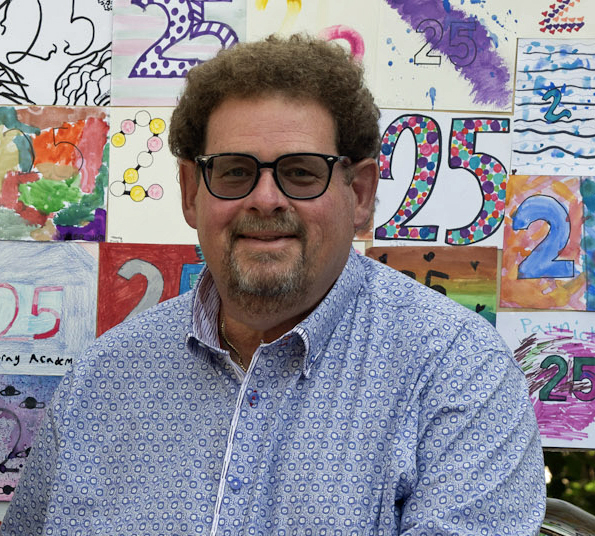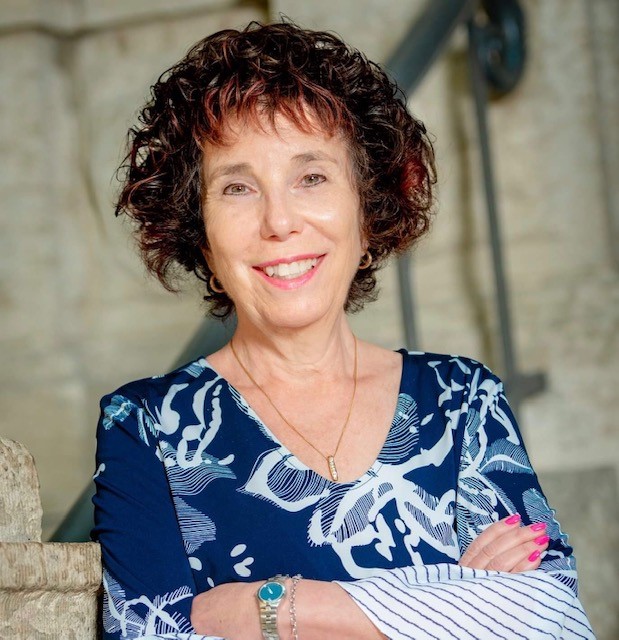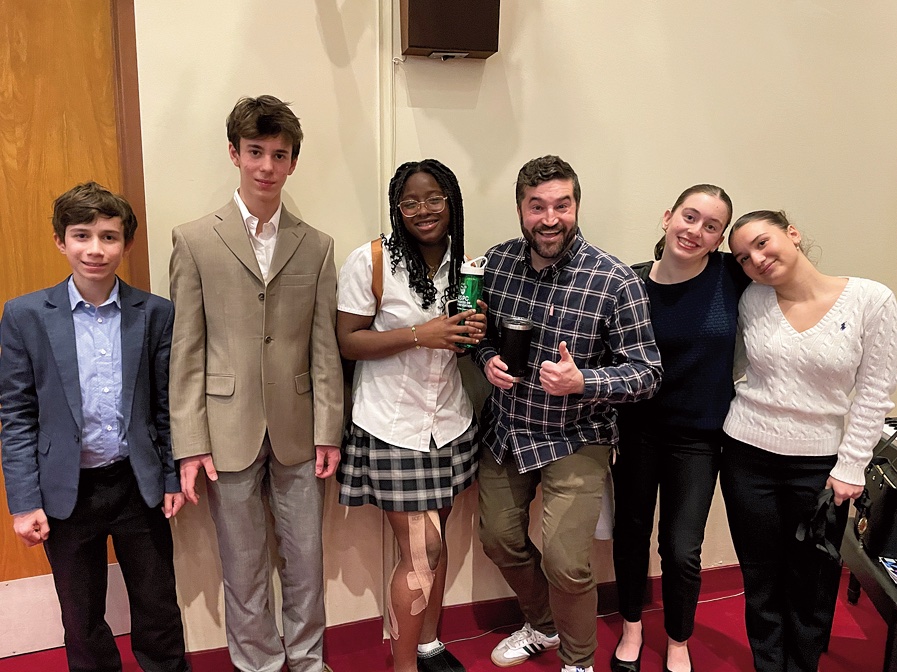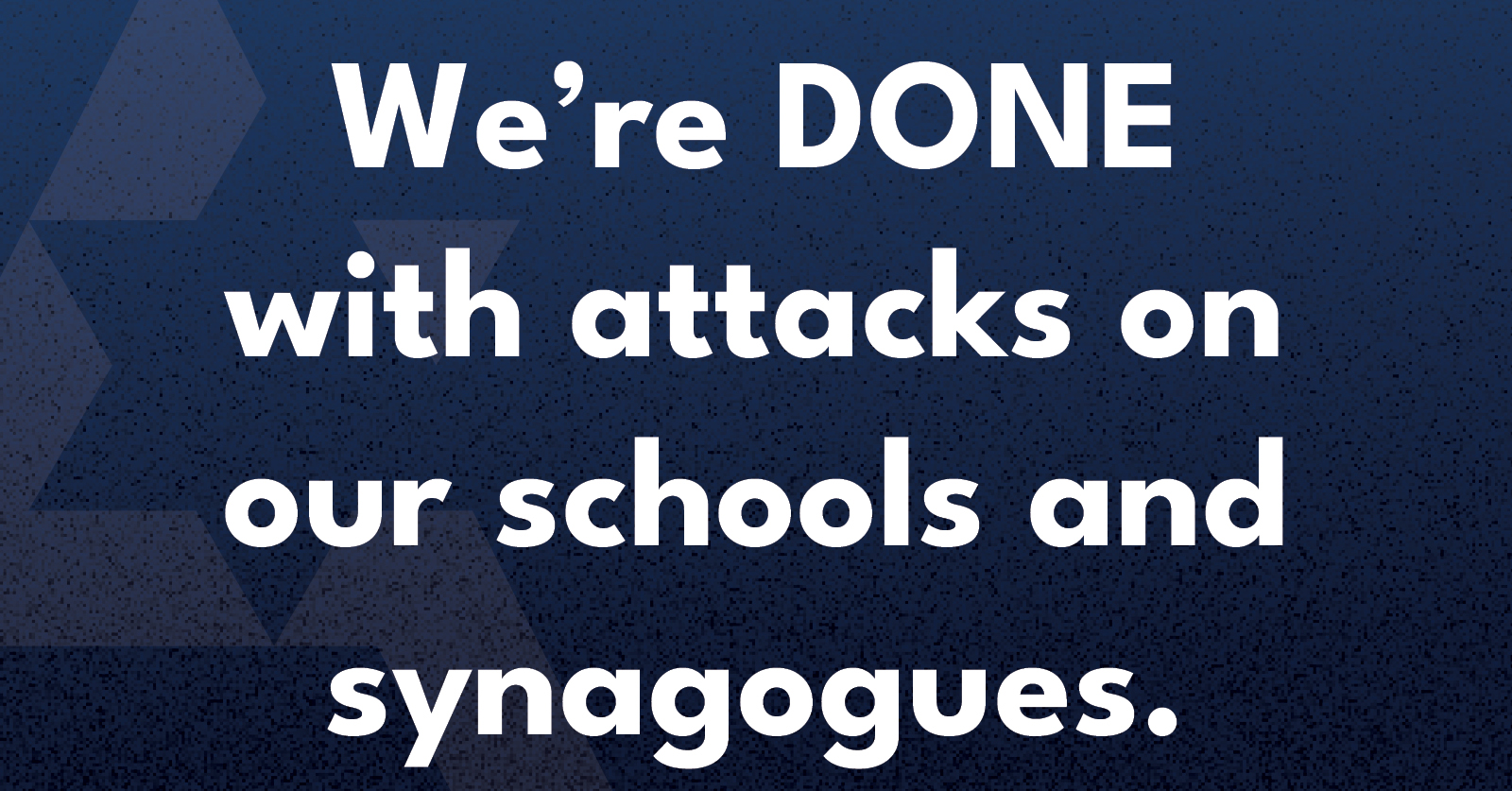Local News
Jeff Lieberman discusses how, after years of serving as chair of major organizations, he’s actually going to be CEO of one: The Jewish Federation

By BERNIE BELLAN Longtime volunteer – and successful businessman Jeff Lieberman was the surprise choice to be the next CEO of the Jewish Federation of Winnipeg.
I say surprise because, after years of serving on numerous quasi-public boards – often as chair of those boards, one would not have thought that Jeff Lieberman was actually interested in becoming the full-time CEO of one of those organizations. But, that he’ll soon be.
Recently I chatted with Jeff about how he came to throw his hat into the ring for the position of Federation CEO.
I’ve known Jeff for many years now – and, along with Avrom Charach, I can’t think of anyone in our Jewish community who has committed themselves longer to serving our community in so many different capacities.
Among various volunteer positions Jeff has held, he’s been the President of Folklorama, Chair of the University of Manitoba Board of Governors, President of the Rady JCC, President of the University of Manitoba Alumni Association. He currently serves as a Board Member of the Jewish Foundation of Manitoba and the Jewish Federation of Winnipeg.
Jeff, now 63, is married to Robyn (née Buchwald), who is the Membership Manager of the Rady JCC. Jeff and Robyn have three children: Amy, 31, who is a teacher at Gray Academy (and who just had a baby December 31, making Jeff and Robyn grandparents for the first time); Josh, 28, who is a lawyer; and Noah, 24, who has now written two books – among other things (and who was profiled in our last edition – before we ever knew about Jeff’s becoming CEO).
I was curious to find out from where Jeff derives an abiding sense of service to the community, but we began our conversation by my asking Jeff about his long-time ownership of his company, “Great Canadian Promotional Products.”
Jeff said he started the company in 1989. “We sold clothing for local companies and organizations,” he said. Eventually, “people started asking for different promotional products…and I’ve been selling promotional products since then.”
“Around 18 years ago I associated my company with a really large promotional products company – Talbot Marketing… and it’s been really great – lots of staff and support, and it’s really made my business life simple.”
Jeff explained that he thought he would stay in business, eventually work less, then retire, “but the last couple of months (in which he began to think about applying for the CEO position) really changed that.”
His goal before was to sell the company in about a year’s time, he said, but not retire from marketing. With everything that’s now happened, however, he’s had to move much quicker to sell his company.
He said that he’s “spoken to a couple of people in the past couple of weeks” and he’s “hoping to sell it” before he steps into his new role on August 14.
At that point I turned the conversation to the process that led Jeff “to throw his hat into the ring.” I said to him: “I’m guessing you were approached to put your name forward. Is that correct?”
Jeff said that he had been the Jewish Foundation of Manitoba’s representative on the Jewish Federation Board the past couple of years and had been aware for quite some time that Elaine Goldstine was planning on retiring as Federation CEO.
“But, to be honest,” Jeff noted, “I had no interest in putting my name forward. I was happy with what I was doing – and had never even considered it (applying for the CEO position.”
He went on to say that he’s not sure exactly what led to his being approached, but “a few people in the community had approached me and asked whether I’d be interested. They thought I’d be a really good person for the position,” he said, “and I was really complimented. When the first person asked I was kind of surprised because I had never really thought of myself that way, but a few months ago two or three other people came up to me and said the same thing, so it gets you thinking a little bit. I knew that the search was still on and eventually I decided to put my name forward.
“I guess there were a number of people that they were interviewing and I was put in the interview process at the same time – and, amazingly, I was told that the search committee had decided that they’d like me to be the CEO. I certainly didn’t expect it and, as a matter of fact, when I did the interview I said: ‘I hope I’m not wasting your time.’
While Jeff has served – and headed, various boards of organizations in the quasi-public sector – as I noted at the beginning of this article, I suggested to him that he would be the first CEO of the Jewish Federation coming from the private sector, and I wondered how different it would be becoming “the CEO of a quasi-public sector organization as opposed to being the owner of a business?”
“It will certainly be different,” Jeff answered. “What I said in my job interview is that if you’re looking for someone who’s there to build relationships and be a good people person, honest, hardworking – that’s what I am – a person of integrity…and a humble person – that’s what I really am. That’s what I think I bring. I know a lot of people in our community and they know me. I think I’ve got a good reputation.
“I may not bring the most amount of management skills, but I think what the Federation – and other organizations, need, are people to build relationships and build upon a future, because it’s all about the next generation. I think I can relate to younger people. I’m 63, but I feel like I’m 43…I’ve got lots of energy.
“They asked me in the interview how long I thought do I think I could work in this position? and I said, ‘Yah, I think I could work five – ten years.’’’
I asked whether there is a term attached to the CEO position?
Jeff said, “not really,” so I said “sort of like Vladimir Putin – you could just continue on as long as you want.”
I said though that, while I would want to discuss where Jeff thought changes were needed most at the Federation, I would give him a chance to “get his feet wet” before I’d ask him to start answering those types of questions.
What I wondered about though, is from where Jeff derived his strong sense of volunteerism? Was it something he grew up with? I asked.
“Not really,” Jeff responded. “My parents were hard working and they didn’t do a whole lot of volunteering. My mum (Dora, who died in 2011) did a little bit of that. My father (Aron, who died in 2022) was born in Poland. His family was all killed (in the Holocaust). When he had a chance to come to Canada, he came – on a boat. He was sick the whole way. When he got to Montreal he was told to come to Winnipeg. He was put on a train – didn’t speak a word of English. He worked in a factory all his life, worked hard. It was all about providing for my brother (Garry) and me – providing an education.” There was nothing specific in Jeff’s upbringing that led him to want to give back so much to the community, he added.
But, when he was much younger, he “was invited to go on a Federation mission – I think it was in 1988, and really after that I got the bug to volunteer. I started off at the Rady JCC – which then was the Y – and was on the board.
“Certainly I put in lots of hours volunteering, but I get so much out of it. I’ve met so many great people and experienced so many fantastic things.”
I said to Jeff that he’s such a nice guy, I wondered how it was going to be for him when he had to start saying “no” to a lot of people and organizations when they would be coming to the Federation with requests – especially for money. I noted that Bob Freedman, who had been CEO for 28 years, had a reputation for toughness – and wasn’t afraid to be confrontational at times. (I don’t recall hearing that Elaine Goldstine could be tough in the same way that Bob was tough but, on the other hand, the Goldstine reign is not quite over – and just like retired presidents, maybe the dirt will surface once Elaine has fully retired. Anyone who’s familiar with this newspaper knows that I like nothing more than to trade in gossip and innuendo, so watch out Elaine: We’re coming for you!)
I also mentioned to Jeff that I go back long enough to remember when the late Izzy Peltz basically ran what was then the Winnipeg Jewish Community Council as a one-man show.
Jeff recalled that “in those days, Robyn’s grandfather, Ralph Hamovich (whose daughter is Mira Buchwald, Robyn’s mother), was the other member of the team with Izzy (Peltz). I think Izzy ran the office, while Ralph ran the Combined Jewish Appeal part of it.”
“Yah,” I suggested, “it was really a small organization back then. You could have a two-man show.” (Boy, from a small seedling, mighty organizations with large staffs grow.)
And, speaking of staff, I noted that there have been many changes at the Federation recently, including two recent changes that were announced in our last issue: Sharon Graham as Community Planning and Allocations Lead (a position that had been vacant since the retirement of Faye Rosenberg-Cohen in December); and Graciela Najenson, as Interim Chief Development Officer (taking over from the recently departed Rebecca Brask).
Those are two hugely important positions in our community and, although both previous occupants of those positions may not have commanded a lot of attention outside of the Jewish organizational level, both Faye Rosenberg-Cohen and Rebecca Brask played key roles in determining how much money was available for the 12 beneficiary organizations of the Federation and how that money was distributed.
I said to Jeff though that I thought Elaine Goldstine’s last day as Federation CEO was going to be August 31. He said it was, “but that we’re going to have a few days together. Elaine and I have known each other forever. She has been so helpful. We’ve spoken every day and she said to me, ‘Jeff, I’m a phone call away and if you have any questions after that, just ask.’ I really appreciate that.”
On an end note, I said to Jeff that I thought his being hired was a refreshing change for the Federation and, while the piece I was going to write was going to be all “flowery,” (which this has been), “the muckraking was yet to come.”
Local News
Cheryl Hirsch Katz, Jewish Child and Family Service’s longest serving staffer, set to retire at end of the month

By MYRON LOVE “I loved working at Jewish Child and Family Service,” says Cheryl Hirsh Katz, who is due to retire at the end of June. “I have always appreciated the warm and welcoming atmosphere here. I feel that the people working here are my extended family. I am going to miss my colleagues”.
“I have derived great satisfaction over the years to have been able to help many people in our community of all ages through my work at JCFS,” she continues.
After 44 years at the agency, Katz, the longest-serving member of the staff, was given an appreciative send-off at the JCFS’s recent (June 23) Annual General Meeting at the Shaarey Zedek Synagogue.
The daughter of Art and Bess Hirsh, Cheryl grew up in Garden City. She attended Peretz School, then Jefferson Junior High and Garden City Collegiate. She joined the staff of JCFS in 1981, shortly after receiving her Bachelor of Social Work degree.
She earned an MSW in 1990.
“I chose to become a social worker,” she recalls, “because I always wanted to be able to help people.”
Katz was originally hired by JCFS to work with newcomers. After a couple of years, she was given responsibility for looking after the needs of older adults.
“I really enjoyed working in older adult services,” she says. “That is where I spent the bulk of my time at JCFS.”
After ten years as a case worker, she was promoted to a supervisory role. Later, she was also given responsibility for mental health and addictions programming and settlement services, while keeping the older adult files under her purview.
“As a supervisor, I wasn’t directly involved with individual clients,” she points out. “I was more involved with programming. Among the programs for seniors we organized were – for example – sessions on elder abuse, digital storytelling and memory loss.”
She notes that one of the trends she has seen over the last 44 years is that people are living longer and living in their homes longer. A lot more of our clients are living well into their 90s,” she observes. “We have had to continually expand our staff and the services we provide in order to accommodate the growing demands of an aging population.”
She also spoke of the mental health needs of seniors and aging Holocaust survivors.
She says that she has mixed feelings about leaving JCFS. “After so many years working full time, I am going to have to create a new routine,” she comments.
She notes that, now that she is retired, she will have more time to spend with her parents – who are in their 90s.
And then, there are the two dogs to look after. “I will have time now to try new activities,” she says. “ I might learn to play mah-jong.”
She speaks about maybe doing some traveling – although her husband, Murray, is still working full time.
(She and Murray have one daughter, Farah.)
“Retirement may also include some volunteering,” she adds.
It is quite likely, she will be continuing her association with JCFS but in a volunteer capacity.
Local News
Gray Academy students shine in provincial, national debating competitions

By MYRON LOVE It has been another good year for Gray Academy’s high school students who participated in provincial and national debating competitions. The best results were recorded by Grade 9 student Noa Mednikov, who finished fourth overall nationally, fourth in interpretive reading, and fifth in persuasive speaking at the junior National Public Speaking Championship in early May in Vancouver.
Last October, in the Junior Provincial British Parliamentary Championship – which was held at St. John’s-Ravenscourt – Noa and her partner, Raya Braunstein, finished third as a team while Raya placed third in individual debating.
Their fellow Grade 9 student Maxim Moscalenkov tied for first in persuasive speaking in Vancouver, while the Gray Academy team of Gabe Tapper and Aaron Koplovich finished fifth. Aaron also finished fifth in his individual debate.
Earlier, in March, Maxim finished fifth in the Provincial Juniors debating competition, which was held at Balmoral Hall He and his debate partner, Nate Shenkarow, finished seventh among the teams entered. Last November, he and partner, Ethan Tenenbein, finished seventh in the Junior Prepared Tournament – just behind the Gray Academy team of Nate Shenkarow and Jack Kay.
At the senior high level in that competition, the team of Jacob Tenenbein and Jonah Novoseller finished fourth and Jacob was recognized as fifth best in an individual capacity. Jonah and Jacob also paired up to win the Asper Cup, which was held at their home school.
Jacob represented Manitoba at the Junior National Speech Championship in Vancouver in May and, last October, he and Grade 12 Gray Academy students Julie Krozkin and Daniel Bokser represented Canada at an international debating tournament in Bermuda.
Gray Academy’s debating program was introduced by Linda Martin in 2003. She also led the debating teams at Balmoral Hall. In 2011, Martin was succeeded by Gray Academy high school English teacher Andrew Kaplan.
“Andrew has done a wonderful job with the debating program” says Martin, who has a debating trophy at Gray Academy named in her honour, as well as a provincial trophy for best individual junior debater. “Over the years, Gray Academy students have done very well in many local, national and international competitions,” she adds.
About three weeks ago, this writer had the opportunity to sit down with Andrew Kaplan and six of the school’s top debaters while they discussed the benefits of learning how to debate. According to Noah Strauss – who competed in the Junior Provincials at Balmoral Hall in March, public speaking leaves him with a feeling of accomplishment.
“It’s a good skill set to have,” he observes. “It builds confidence.”
“A benefit of being able to debate is that you learn how to convince people that you know what you are talking about,” adds Maxim Moscolenkov.
Raya Braunstein notes that being able to debate is a skill that she expects to be helpful in many university courses which she may choose to take.
As Andrew Kaplan notes, the ability to express yourself has a great impact in whatever career you choose to pursue.
He points out that debating is compulsory at Gray Academy for all Grade 7 and 8 students – and students can continue debating as an option in the higher grades
Of course, competitive debating is not for everyone. For those students who opt to take that path, the journey begins with internal school debate competition – with the top debating teams and individuals qualifying for local tournaments and – potentially – beyond.
Andrew Kaplan reports that a small number of high schools in Winnipeg and southern Manitoba have active debating programs – including St. Johns Ravenscourt, St. Paul’s High School, St. Mary’s Academy, Garden City and Maples Collegiates in the Seven Oaks School Division, St. Maurice (a Catholic School), as well as Morden Collegiate and Dasmesh, a Sikh private school.
Kaplan expresses his appreciation to the Asper Foundation and an endowment spearheaded by the Kives Family for providing funding for the Gray Academy debating program – as well as the Andrew Slough Foundation – which was established by his friends in memory of the outstanding former Ravenscourt student debater and lawyer who passed away suddenly two years ago at the still young age of 38.
I am confident that our Jewish community can look forward to the continued success of Gray Academy’s star debaters and to the continual emergence of future stars as the times goes by.
Local News
Antisemitism has crept into grade school in Canada

Antisemitism in Canada has moved beyond protests and politics; it is now entering classrooms and altering how Jewish children see themselves functioning within them.
A a university student I have observed the experience of my younger brother in grade eight as a Jewish student. Over the past few months, his school has been at the center of several deeply troubling incidents that have made him feel unsafe in our parks, community, and even his school. Swastikas were drawn around the community, in parks and ponds. Additionally, an older man, who claims to be a pro-Palestinian influencer, stood outside his predominantly Jewish school wearing a keffiyeh, filming a video which then circulated between students on TikTok.
This same man later showed up to our local Jewish community center in keffiyeh to allegedly watch his son play basketball where my brother and many of his classmates go for their lessons, basketball games, and Jewish events. These moments made him and his peers feel watched and targeted just for being Jewish. Local political representatives condemned the incidents and raised awareness about antisemitism, but the fear among students didn’t go away. The feeling of being targeted for simply existing has been taught to my brother, something my parents had tried their hardest to escape from.
Most recently, my brother was chosen to represent his school at a regional science fair. When one of the judges arrived wearing a keffiyeh, he froze. For many, including my brother after the incidents he has faced, the keffiyeh represents a political message. But even more so for my younger brother, it is tied to the fear and intimidation he had already experienced. He felt nervous, distracted, and unsure of how to act.
This is not about silencing political expression. It is about a child who came to share his ideas and left feeling uncertain and afraid. It is about the atmosphere forming in Canadian schools, where Jewish students are being made to feel targeted and unwelcome.
His school made an effort to address the incidents, but the impact is lasting. Posts on social media, much can be very vague at times about inclusion cannot fully undo the feeling of being singled out. A kind word from a teacher does not erase the fear that builds when threats are left unspoken but deeply felt.
I am writing this as a sister who watched her younger brother lose a moment that should have been filled with confidence and pride. He deserved to feel safe. So do all Jewish students in this country.
Moving forward, schools must take concrete steps to protect all students. Antisemitism cannot only be addressed when it becomes violent or overt. It must also be recognized when it appears as intimidation, symbolic targeting, or political messaging that creates fear among students. Children should never have to question whether they are safe in their own classrooms or community spaces.
Events that are meant to support and celebrate students must remain focused on them. Individuals who feel the need to bring political symbols or messages into school grounds or children’s events should not be welcomed in those spaces. Schools must make it clear that their environments exist to support learning, safety, and inclusion, not to host agendas that can intimidate or isolate students.
Administrators and educators must develop clear guidelines for identifying and responding to antisemitic behavior in all its forms. This includes strengthening security measures, offering ongoing staff training, and engaging directly with Jewish families to understand their concerns. Inclusion is not a one-time statement. It is a responsibility that must be reflected in everyday decisions and actions. No child should ever feel unsafe or unwelcome because of their identity.
The author is a Campus Media Fellow with HonestReporting Canada and Allied Voices for Israel who lives in Toronto.
